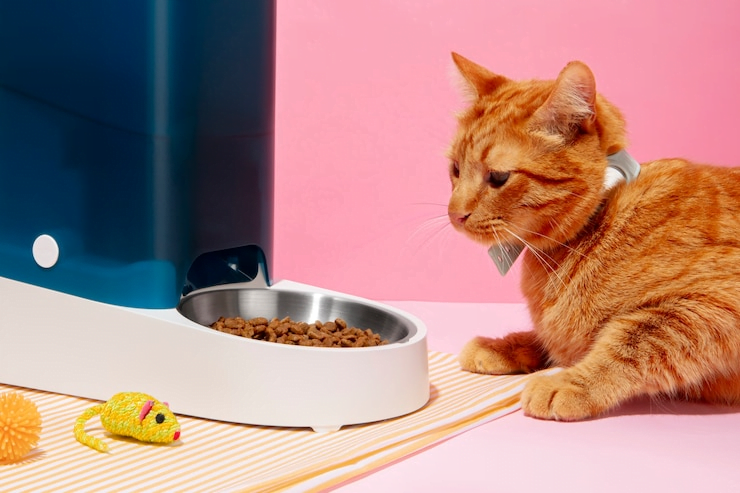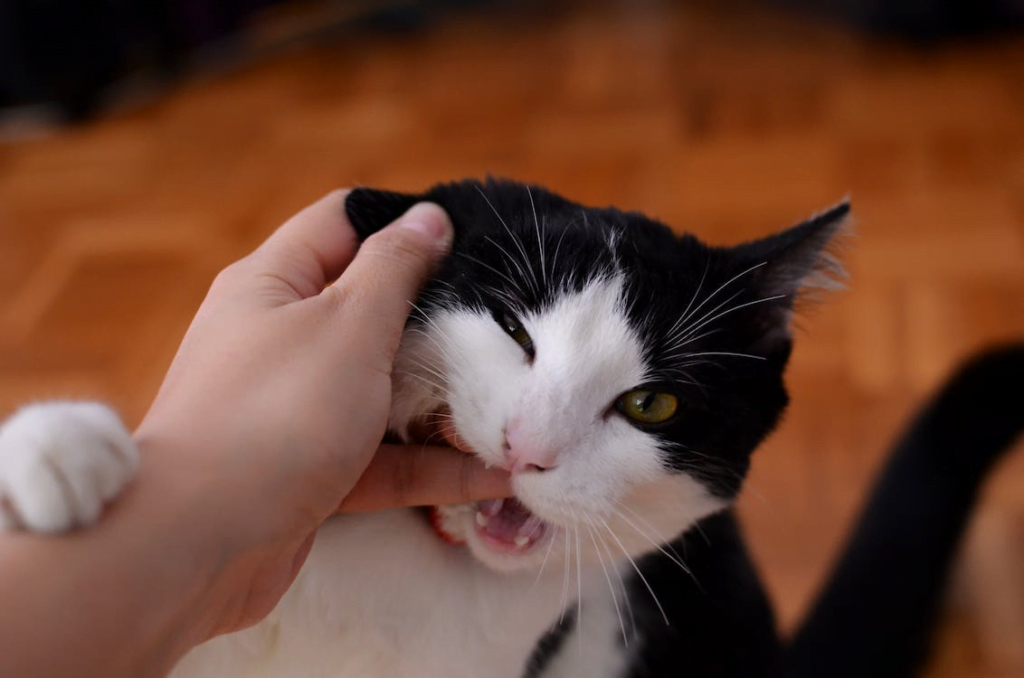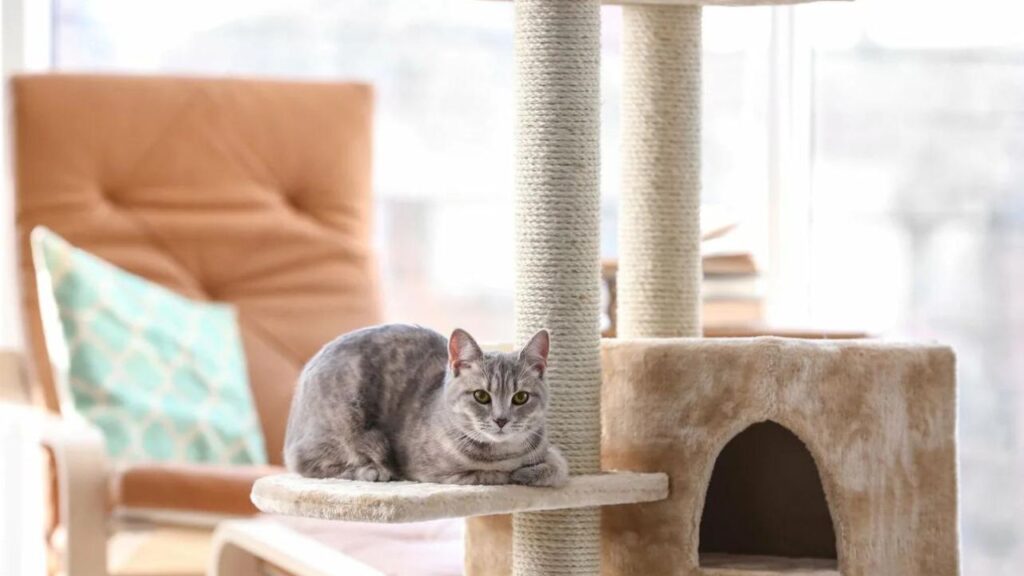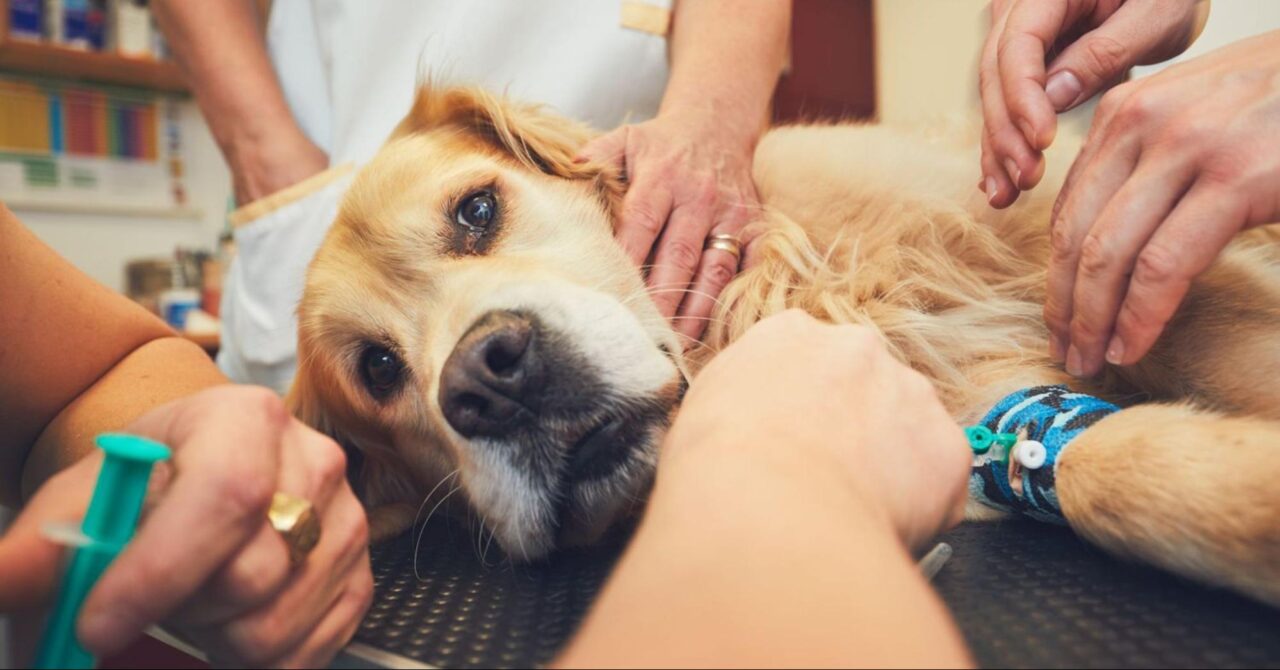
We’ll delve into essential How To Train a Cat Tips and Tricks that every cat owner should know. Training your cat might sound impossible, but it can be made possible by making it a fun and patient action guide. Any form of training geared towards improving a cat’s tricks and behaviors can be administered if the right guideline criteria are followed.
Most people tend to believe that only dogs can be trained but, cats can also undergo training. Some people have even been heard to say that it is more comfortable to train a cat than it is to train a dog! All the same, several reasons make your training either worthwhile or not. These reasons could be training a cat to better its bad behaviors, teaching it some basic commands, or performing tricks.
This guide will be touching on most of the key aspects revolving around training your car so long as it personnel the sitting postures, pics litter box, does not bite, and the tricks.
How to train a cat to sit
Teaching your cat to sit is pretty simple and doesn’t take much time. You start by observing when your cat naturally sits down, then click and reward them for it. Add a hand signal and a verbal cue like “sit,” and over time, your cat will learn to sit on command and Soon they will associate the cue with the behavior.
How to train a cat to use the litter box
Many kittens and cats come already knowing how to use the litter box. But if yours doesn’t, don’t worry, you can train them quickly.
Ensure the litter box is pristine and positioned in a tranquil location. After your kitty eats, gently place them in the litter box and softly scratch the litter with one of their front paws. When they go pee or poop, praise them and take them out of the box. Keep doing this consistently, and they’ll soon understand that the litter box is where they should go.
Tip: If your cat starts going outside the litter box suddenly, it might indicate a health issue like a UTI. Talk to your vet if you notice any unusual litter box behavior.
30 Simple Tricks to Teach Your Cat

1. Sit: Hold a treat close to your cat’s nose and move your hand up, allowing their head to follow the treat and causing their bottom to lower. Once they’re in a sitting position, say “sit,” give them the treat, and share affection.
2. High Five: Tap your cat’s paw while saying “high five”. Give them a treat when they move their paw in response.
3. Stand: Hold a treat just above their head and say “Stand”. Reward them when they stand on their hind legs.
4. Come: Use a treat to entice your cat to come to you. As they are approaching, say “come”.
5. Touch: Put a treat in your hand, and as your cat touches your hand with their paw, say “touch,” and give them the treat.
6. Jump: Hold a treat high above their head and say “Jump”. Reward them when they jump up to get it.
7. Spin: Lead your cat in a circle with a treat saying “spin”. Reward them when they complete the circle.
8. Stay: Ask your cat to sit, then open your palm in front of you, and say “Stay”. Start backing up slowly, then give them the treat if they stay put.
9. Fetch: Throw a toy, and when your cat goes to get it, say “fetch”. When they bring it back, reward them with a treat.
10. Roll Over: Say “roll over” while gently rolling your cat over. Give them a treat when they do it.
11. Speak: Say “speak” whenever your cat makes noise. Give them a treat when they do.
12. Shake Hands: Pick up your cat’s paw, say “shake hands”, and give them a treat.
13. Find the Treat: Hide a treat while your cat is watching and say “Find the treat”. Reward them when they find it.
14. Paw: Hold out your hand and say “paw” when your cat lifts their paw. Reward them with a treat.
15. Bed: Point to their bed and say “bed”. Provide a reward each time they retreat to their designated sleeping area
16. Quiet: Say “quiet” when your cat is being noisy. When they quiet down, give them a treat.
17. No: When your cat is doing something they shouldn’t, say “no” in a firm voice. When they stop, give them a treat.
18. Yes: When your cat does something good, say “yes” and give them a treat.
19. Wait: Before feeding your cat, say “Wait”. Only give them the food when they have waited for a few seconds.
20. Go: Point to a specific location and say “go”. Reward your cat when they go to that location.
21. Up : Point upwards and say “up”. Reward your cat when they look or jumps up.
22. Down: Point downwards and say “down”. Reward your cat when they look or jumps down.
23. Off: When your cat jumps on something they shouldn’t, say “off”. When they jump off, give them a treat.
24. Drop It: When your cat has something in their mouth they shouldn’t, say “drop it”. When they drop it, give them a treat.
25. Leave It: If your cat is about to jump on something they shouldn’t, say “leave it”. Reward them when they walk away.
26. Watch Me: Say “Watch me” and hold a treat up to your face. When your cat looks at you, give them the treat.
27. Jump Through a Hoop: Start with a small hoop and gradually increase the size as your cat gets more comfortable jumping through it, reward them with a treat.
28. Hug: Say “hug” and gently wrap your arms around your cat. When they stay calm, give them a treat.
29. Dance: Hold a treat above your cat’s head and say “Dance”. Reward them when they stand on their hind legs and move their front paws.
30. Climb: Point to a cat tree and say “Climb”. When your cat climbs up, give them a treat.
Remember, patience is key when teaching your cat these tricks. Always use positive reinforcement and never punish your cat if they don’t understand or perform the trick. With time and practice, your cat will start performing these tricks.
How to train a cat not to bite
It’s not unusual for cats to bite, but it can become a problem behavior. If your cat bites due to feeling their boundaries are being crossed, respect their space. However, if the biting occurs during rough play, stop engaging and ignore the cat. Reward calm behavior when it resumes.
Another approach to discourage biting is to offer your hand for licking instead. Place a treat or some cat food on your hand or fingers and let your cat lick it off. This helps them learn a more appropriate way to interact when playful.
How To Train a Cat Tips and Tricks
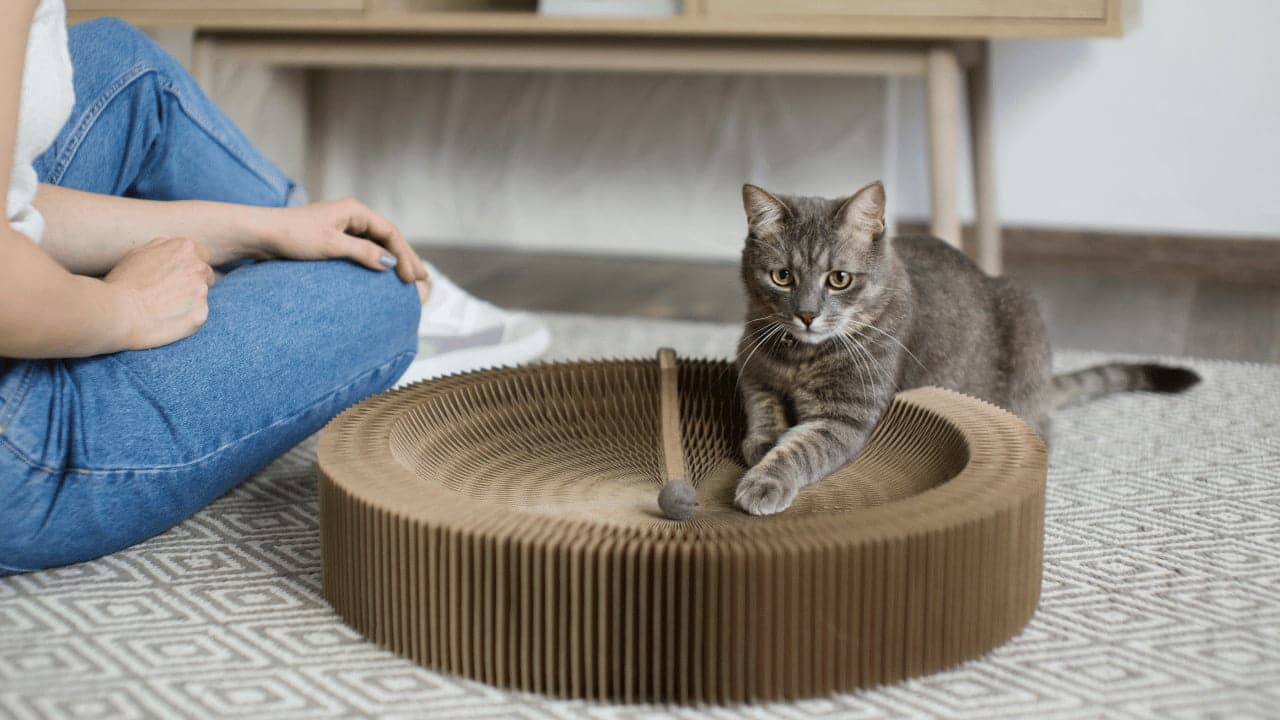
Training your cat requires patience, consistency, and understanding. Here are some proven tips to help you navigate this process effectively:
Establish a Routine:
Cats thrive on routine and predictability. Establish a consistent daily routine for feeding, playtime, and litter box cleaning. Consistency helps cats feel secure and makes training more effective.
Positive Reinforcement:
Reward good behavior with treats, praise, or playtime. Positive reinforcement is a powerful tool in cat training, encouraging your cat to repeat desirable behaviors.
Clicker Training:
Utilizing a clicker as a training aid is widely recognized as an effective approach to introducing cats to novel behaviors. By associating the sound of a clicker with a reward, you can communicate with your cat more effectively and reinforce desired actions.
Use Scratching Posts:
Provide plenty of scratching posts and pads to satisfy your cat’s natural urge to scratch. Encourage your cat to use these designated scratching areas by placing them near their favorite resting spots or using catnip to attract them.
Litter Training:
commence the process of litter training your feline companion at the earliest opportunity, accessible location and keep it clean at all times. If accidents occur, avoid punishment and instead gently guide your cat to the litter box.
Provide Mental Stimulation:
Enrich your cat’s environment with toys, puzzles, and interactive games to prevent boredom and destructive behaviors. Rotate toys regularly to keep your cat engaged and stimulated.
(FAQs)
Can cats learn words and behaviors?
Yes, cats can understand words and learn behaviors. They can even learn fun tricks.
How can I motivate my cat during training sessions?
Cats learn quickly when you reward them with a treat. Punishment can undermine the learning process and make them scared of you.
What if my cat isn’t food-motivated?
If your cat isn’t food-motivated, try to find other forms of positive reinforcement that they respond to. This could be praise, petting, or playtime with a favorite toy.
Can you train an older cat?
Yes, you can train an older cat, although it may require more patience and persistence compared to training a kitten. Focus on positive reinforcement and reward-based training methods, and be patient with your cat’s learning pace.


